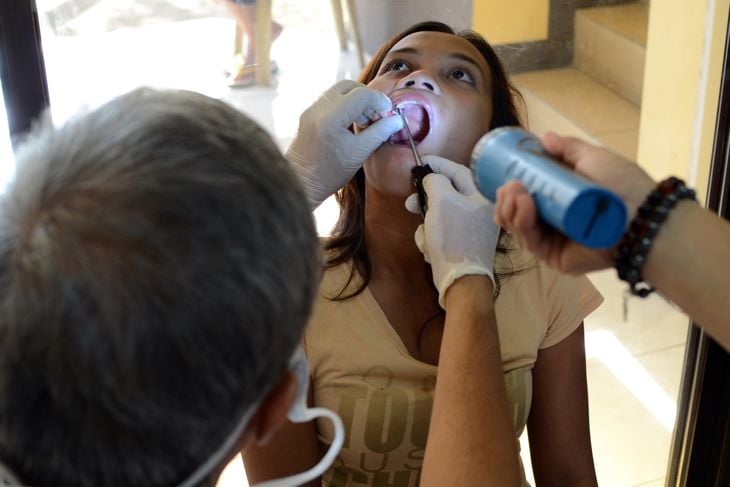How To Not Get Dry Socket
A small number of people experience dry socket after having their teeth pulled. It's painful and annoying, but you can cure it with proper care. When your tooth is pulled, a blood clot should form where the tooth once was. It protects the bone and the nerve until the flesh heals and covers the wound. Sometimes, the blood clot may dissolve and fall out. This leaves the nerves open to damage. The entire condition is curable, and you won't miss a beat of your day-to-day life. Let's get to know the signs of dry socket and how to battle it.
Pain in the Tooth Area
The pain usually begins two or three days after your tooth is pulled. You will notice it being sporadic at first but getting stronger when eating or drinking. This is because of the exposed nerve. With no tooth to protect it, your nerve has no protection against sensation, and so will feel everything. Usually, the best treatment for this is a preventative one. Dentists typically prescribe antibiotics to prevent this from happening, as infection can cause the worst pain. Proper treatment at the dentist's office will prevent this from ever happening. Consult with your doctor if you want to receive extra precautionary measures.

Jaw pain
Depending on the location of the tooth, the infection can begin to spread. The speed of the disease directly depends on your immunity and your lifestyle. Smokers, obese people and those who don't pay attention to oral hygiene are at risk. They will be more prone to stronger pain. Even though it may be uncomfortable and it may disrupt your daily life, dry socket at this stage isn't too bad. If you feel anything, visit your dentist. The treatment is probably going to be aspirin or ibuprofen.

Disrupted hearing and pain in the ear drum
This is perhaps the final stage of dry socket spreading. When the infection advances, it will almost always strike the ears. You may feel the pain radiating in your ear. It may prevent you from differentiating different sounds and hearing lower-pitched ones. At this stage, you shouldn't hesitate to revisit the dentist. To combat this symptom, the dentist will perform a detailed checkup. They may administer anesthesia and potentially operate again. To eliminate the infection, you will have to apply a special antibacterial paste.

Numbness in the entire jaw
When the pain advances, you will feel sporadic sensations of numbness. This is a defense mechanism applied by your body to protect you from too much pain. If you notice such a feeling during chewing food or doing anything else, call your dentist. Dry socket is well known, and you will be able to get treatment immediately. Numbness is an indicator that your infection has spread a little bit too much. The dentist will clean the socket, remove debris and fill it with healing paste to help the wound heal. The faster it improves, the less opportunity the infection has to return.

Bad breath
You probably heard this one before – bad breath is a sign of bacteria in your mouth. It's true! That's why we have bad breath in the morning. Many hours pass between brushing our teeth, and small bacteria gather on the tongue. In the case of dry socket, the bad breath will be a little more intense, and it won't subside. Bad breath isn't too severe of a symptom. Your dentist will most likely give you a special mouthwash, something like Listerine. You should be administering it a few times per day, especially after eating and brushing your teeth.

Slight headaches
Because the pain spreads, it may reach your sinuses or the upper parts of your skull. This will interfere with your brain, and your head will hurt a little bit. Your dentist will assess the magnitude of the infection and will likely prescribe you anti-inflammatory medication. The best treatment for dry socket-related headaches is aspirin or ibuprofen.

Red gums
Healthy gums should always be pink and should cover most of your teeth. Red gums always signal that there is an ongoing infection. As time passes, the redness will only increase. You might also notice your gums retracting and showing more of your teeth. This may lead to more teeth falling out, and you should not ignore it. The treatment for this is special toothpaste, along with some additional antibiotics. Gum health is the basis of oral health, as damaged gums may hinder teeth health too. Be sure to look at your gums a few times a day after you get your tooth pulled out.

Sensitive gums
Gums should be healthy and able to withstand pressure and touches. If they become sensitive all a sudden, it's a sign that you may have dry socket. With this condition, the gums may still stay pink, but they will hurt. Pay proper attention to them when brushing your teeth and eating food. If you take good care of your teeth, you shouldn't have sensitivity. As it is with red gums, sensitive gums also need special toothpaste. Along with that, you may want to brush your teeth a few more times a day than usual. It should pass in a day or two, along with the infection.

Slight speech difficulties
May vowels require you to touch your tongue to your teeth. When a tooth is gone, and you have dry socket, that contact might cause pain. Some sounds will come out differently while you talk, and you might feel less of an urge to speak because of the pain. The doctor will give you antibiotics. He or she will cover the hole with natural, protective paste. This should speed up the healing process and protect you from bacteria.

Pain when smoking
Smoking involves inhaling a mix of air and smoke. When you do that, the air passes through the entire mouth cavity. If you have dry socket, such pressure might irritate the nerve and cause pain. The treatment – stop smoking! We can't stress this enough. Smoking is hazardous, harmful and unhealthy. If you do smoke and notice pain while doing it, talk to your dentist. Anti-inflammatory medication should solve the problem.

How To Not Get Dry Socket
Source: https://facty.com/ailments/body/what-is-dry-socket-signs-and-treatments/
Posted by: cisnerosthatten.blogspot.com

0 Response to "How To Not Get Dry Socket"
Post a Comment